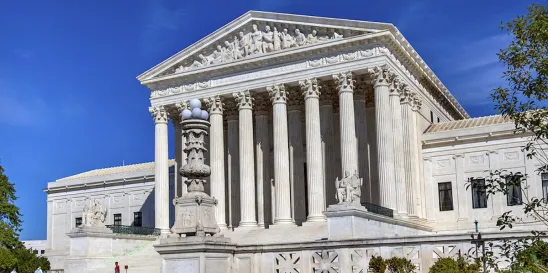The U.S. Supreme Court’s recent decision in Perez v. Sturgis Public Schools further clarifies the procedures required and the remedies available in lawsuits against school districts on behalf of children with disabilities. The case addressed whether a plaintiff is required to exhaust the Individuals with Disabilities Education Act’s (“IDEA”) administrative processes when they pursue compensatory damages under federal statutes, like the Americans with Disabilities Act (“ADA”). Ultimately, the Court ruled the IDEA’s exhaustion requirement is inapplicable to claims for money damages brought under laws other than the IDEA. You can read the decision here.
The case centered around a deaf student who was denied a sign language interpreter while attending a public school in Michigan. The student claimed the school assigned him a classroom aide who did not know sign language and sometimes abandoned him for hours a day. He also claimed the school misrepresented his educational progress, which prevented him from graduating. As a result, the student argued he was denied a free appropriate public education (“FAPE”). The student filed a complaint with the Michigan Department of Education, alleging violations of the IDEA, the ADA, the Rehabilitation Act, and state disabilities laws.
The Administrative Law Judge dismissed all claims, except the IDEA claim and one state law claim. The parties settled the IDEA claim, but the student filed suit in federal court on the ADA claim and a state law claim. The student alleged the school discriminated against him by not providing adequate resources for him to fully participate in school. The student sought compensatory damages for related emotional distress.
The District Court dismissed the student’s suit and the U.S. Court of Appeals for the 6th Circuit affirmed. The 6th Circuit held the settlement of a FAPE claim does not satisfy the IDEA’s exhaustion requirement under 20 U.S.C. § 1415(I). Since the parties settled the IDEA claim, there was no administrative decision by the state to determine if the student was denied FAPE. The 6th Circuit concluded the student had no standing to seek relief in federal court. The student appealed to the U.S. Supreme Court.
In rendering its unanimous decision in favor of the student, the U.S. Supreme Court emphasized two points. First, the Court explained the IDEA should not be read to restrict available remedies under other laws. According to the Court, “remedy” is defined as “the means of enforcing a right,” such as money damages under the ADA. Second, the Court stated exhaustion only applies to individuals seeking relief also available under the IDEA, not all suits seeking relief. While 20 U.S.C. § 1415(I) includes both the words “remedies” and “relief,” the Court interpreted these words to be synonymous, supporting the student’s interpretation of the IDEA. The Court ruled nothing in 20 U.S.C. § 1415(I) bars the student from seeking relief that other federal laws provide. The student did not need to exhaust the requirements of the IDEA process before filing a lawsuit for damages under the ADA.
This decision will impact school districts’ approaches to defending and settling IDEA complaints. By allowing families to sue for damages, this decision may give families more leverage in their negotiations with school districts. This decision may also turn the IDEA process into a legal battle over money, instead of an avenue to quickly address student needs. Nonetheless, school districts should be prepared for a possible increase in the number of cases that could be brought by circumventing the IDEA’s administrative hearing process and carefully craft full settlements to address all issues when resolving matters.



 />i
/>i

